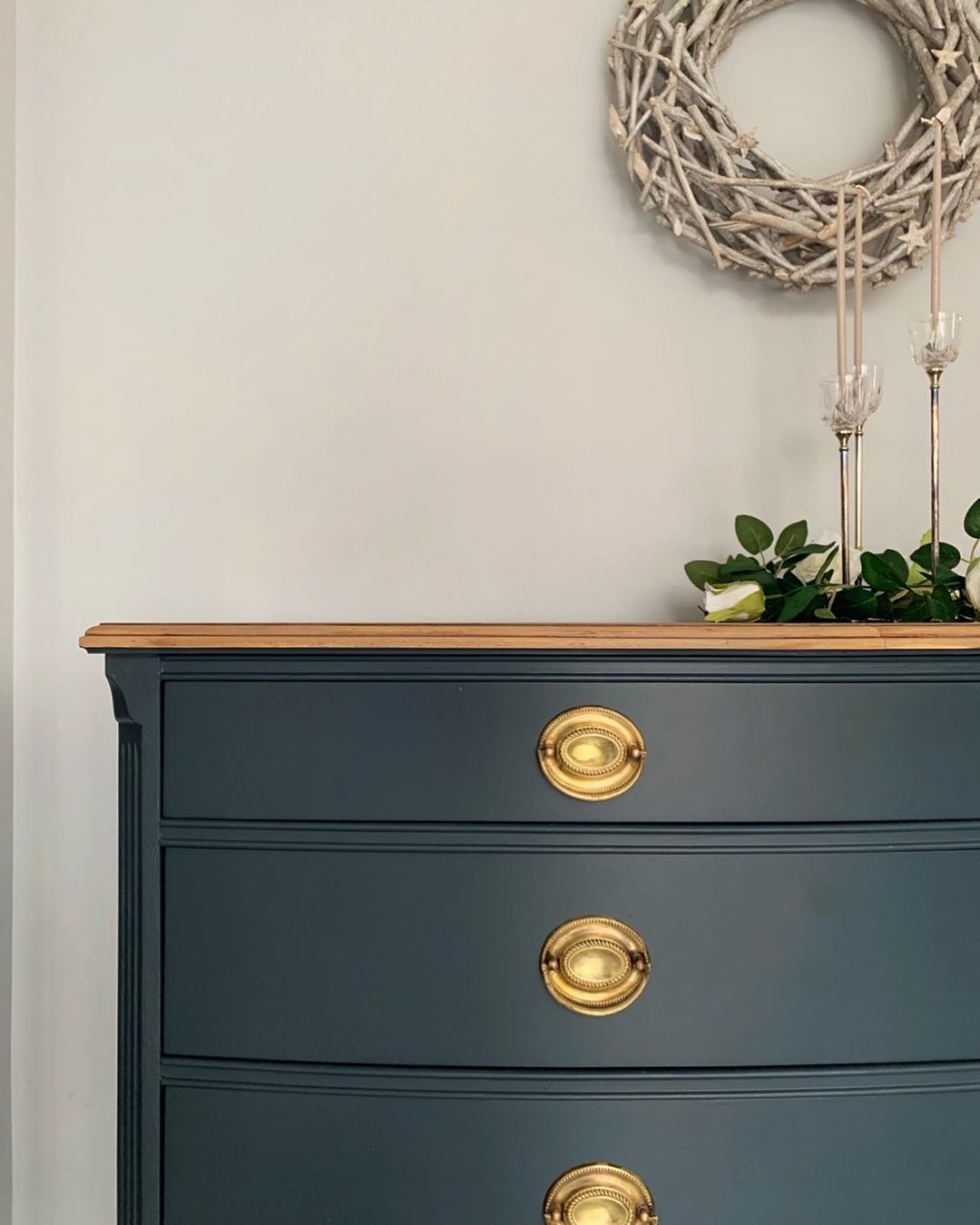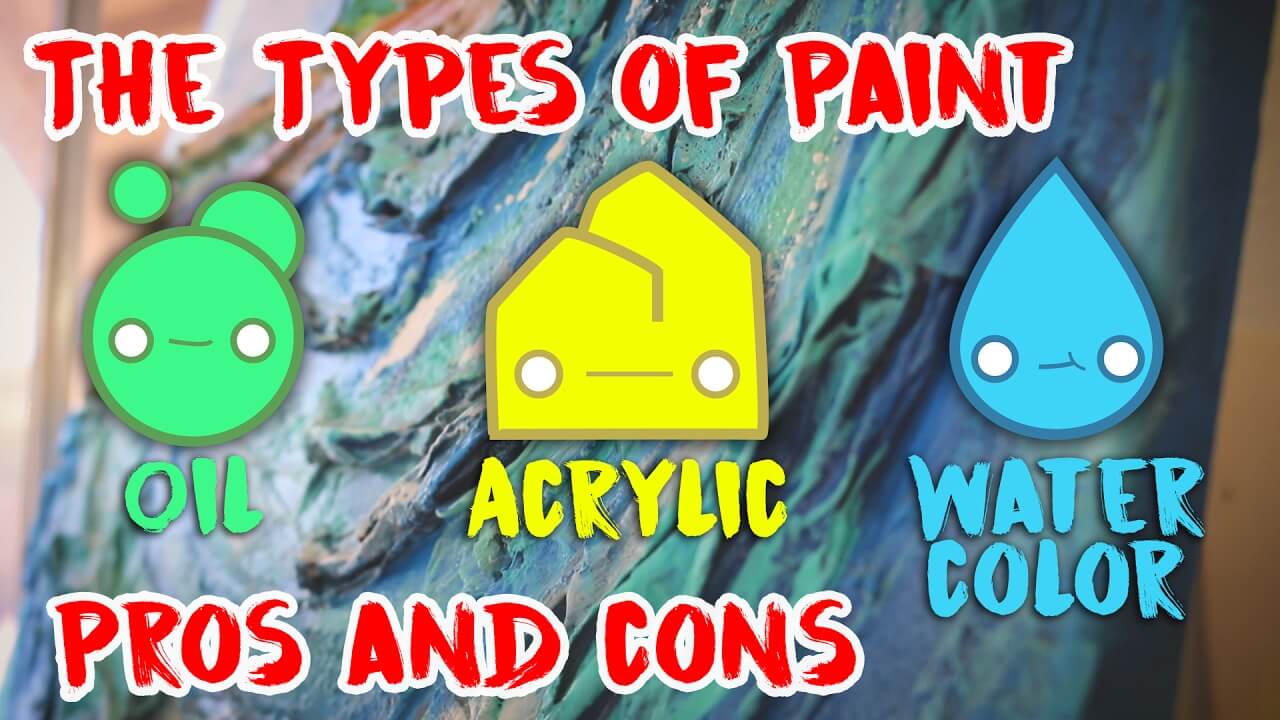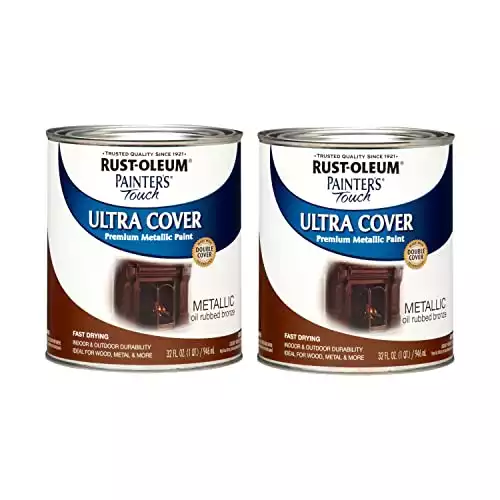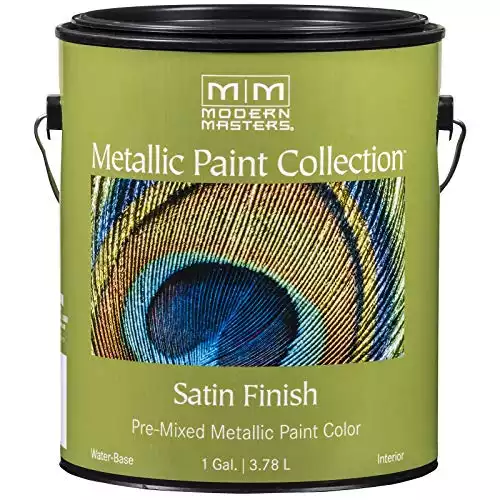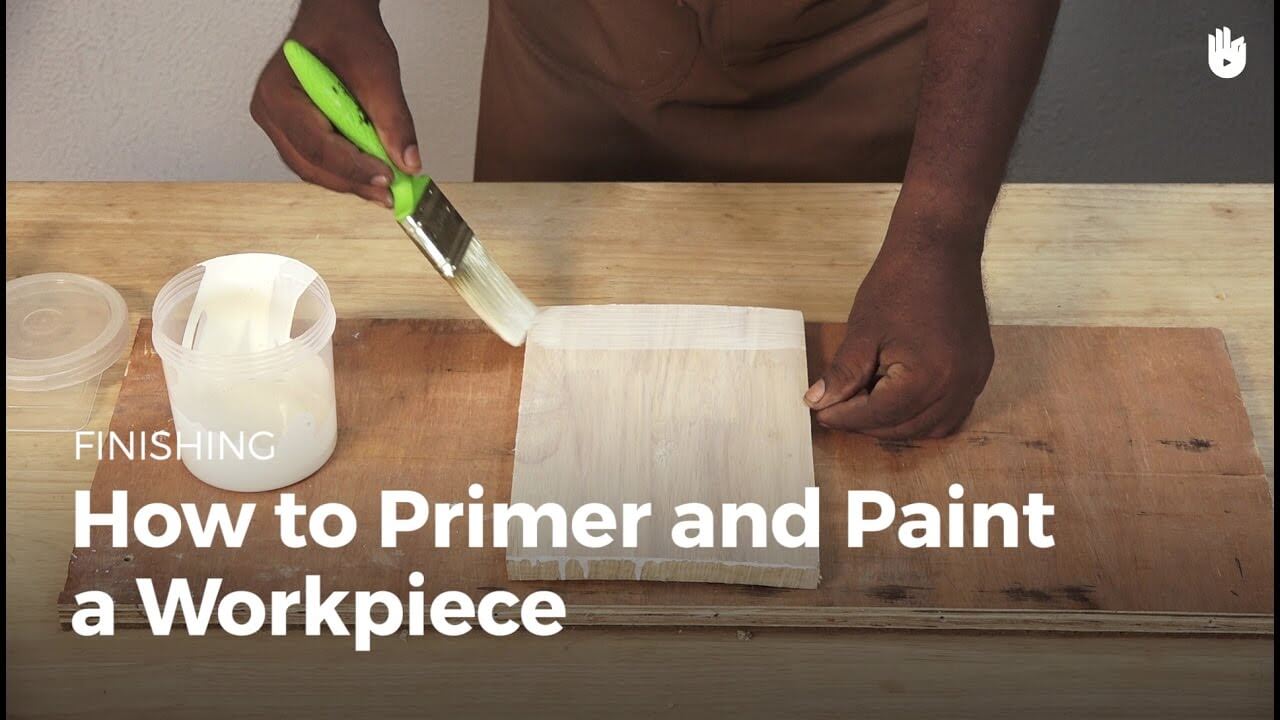What Kind of Paint to Use on Wood?
In order to improve the appearance of any wooden surface, you have to choose the best paint. While wood tolerates most types of paint, you have to make a choice between the various types—acrylic, oil-based, water-based, latex and chalk paints. With proper preparation, you can effectively paint any wood.
Types of Paints for Wood
The marketplace has various types of wood paints. Choosing the right type for your wooden surface from the available variables can be confusing.
Certain paints will suit your chosen wooden surface better than others. Therefore, knowing what types of paints are available for wood for the best results is important.
1 | Oil-Based Paint
These paints come with an oil base. This base is natural or synthetic. Nowadays, the synthetic version is more common than the natural paints. They lend durability to the wood. Once the coat dries, you will find the oil in the paint creates a glossy or matte finish.
The best part about such paints is that the completed projects do not need a top coat for a shiny look. A high-quality brush will help you get a smoother finish than a roller. However, make sure you paint on bare wood or use a primer. Latex and oil do not mix, so do not paint on top of a latex layer.
Oil-based paints also have a better flow and a smoother finish compared to latex paint. Though, cleaning up can be a little messy as it requires solvents like paint thinner or turpentine to get the job done.
Application And Benefits
- Oil-based paint: Ensures durability and an attractive appearance, perfect for protection and finishing wood structures.
- Versatile application: Popular in high-traffic areas, kitchens, and bathrooms, offering wear-resistance and mildew resistance.
- Additional benefits: Glossy, stain-resistant finish, easy to clean, and suitable for various furniture like dining tables, coffee tables, and chairs.
| Feature | Description |
|---|---|
| Pigments | Provide color and opacity; can be organic or inorganic, natural or synthetic |
| Resins | Alkyd resins are common in oil-based paints; they bind pigments together and create a durable film on the surface |
| Thickness | Consistent and easy-to-work-with thickness is ideal for coverage and application |
| Adhesion | Excellent adhesion to surfaces when properly prepared; can withstand long-term use without peeling or flaking |
| Drying Time | Longer drying time compared to water-based paints; allows for smooth finishes and self-leveling |
| Odor | Stronger odor than water-based paints; proper ventilation is necessary during application |
| Ideal Application | Best for high-traffic areas, surfaces requiring a durable finish, and trim work; works well for indoor and outdoor use |
2 | Water-Based Paint
The most commonly sold paints in hardware stores are water-based paints. Of all paint types, these paints are the easiest to use. The wood does not require any pre-treatment unless it has a previous oil-based paint layer. This paint does not have high levels of odor and is not associated with mildew growth.
These paints are known to dry quickly and tend not to crack or fade easily. These paints also make for the easiest clean-up.
Applications And Benefits
- Water-based paint: Preferred for quick-drying and odorless properties, offering a user-friendly painting experience.
- Versatile application: Ideal for wooden structures like roofing, railing, and more, suitable for a wide range of DIY projects.
- Additional benefits: Exceptional compatibility with outdoor furniture due to resistance to fading and cracking from harsh sunlight.
| Feature | Description |
|---|---|
| Pigments | Provide color and opacity; can be organic or inorganic, natural or synthetic |
| Resins | Acrylic or latex resins are common in water-based paints; they bind pigments together and form a durable film |
| Thickness | Consistent and easy-to-work-with thickness is ideal for coverage and application |
| Adhesion | Good adhesion to surfaces when properly prepared; can withstand daily use without peeling or flaking |
| Drying Time | Faster drying time compared to oil-based paints; requires quicker application and attention to brush strokes |
| Odor | Low odor compared to oil-based paints; allows for easier indoor application with minimal ventilation concerns |
| Ideal Application | Best for a wide range of applications, including interior and exterior surfaces, and projects requiring fast drying |
3 | Latex Paint
Most painters who are just starting out prefer to choose latex paint over other types of paint since they find it easiest to work with. On the contrary, oil-based paints are difficult to paint with. Despite latex paint being easy to use, they are not as long-lasting as oil-based paints.
You may find your paintbrush leaves behind marks when painting with latex paint. In order to prevent these stains, you need to add an additive. This will help improve the paint’s flow.
The paint is available in a variety of finishes, allowing you to give your precious wood any look or texture you want. It is also easy to clean and does not tend to adhere to the paintbrush. You can use a brush as well as a roller for application. Spray application is another option you can opt for with latex paints.
These paints do not have an unpleasant odor and are also quite resistant to washing and sunlight.
Whether or not you need to add a topcoat depends on the finish type you want. A glossier finish will not require a topcoat. However, to create a satin- or matte-like finish on the wood, you will need to apply a topcoat.
Applications And Benefits
- Latex paint: Exceptional for wood due to ease of use and simple cleaning process.
- Versatile application: Suitable for standard surfaces, perfect for interiors like bathrooms and kitchens.
- Additional benefits: Quick-drying, low odor, and environmentally friendly, making it a popular choice for various projects.
| Feature | Description |
|---|---|
| Pigments | Provide color and opacity; can be organic or inorganic, natural or synthetic |
| Resins | Latex resins (water-soluble synthetic polymers) are used in latex paints; they offer excellent adhesion and durability |
| Thickness | Consistent and easy-to-work-with thickness is ideal for coverage and application |
| Adhesion | Excellent adhesion to surfaces when properly prepared; can withstand daily use without peeling or flaking |
| Drying Time | Quick drying time, similar to water-based paints; allows for faster project completion |
| Odor | Low odor compared to oil-based paints; suitable for indoor application with minimal ventilation concerns |
| Ideal Application | Ideal for interior and exterior surfaces, including walls, ceilings, trim, and a variety of projects requiring a durable finish |
4 | Chalk Paint
While chalk paint falls under the category of water-based paint, it is so unique it deserves its own section. This paint has the ability to give a matte appearance to any surface to which it is applied. Chalk paint is the way to go if you want to give your interiors a rustic look.
It does not require you to prep the wood before application. It can be directly applied to any clean and dry surface. It is less likely to drip than regular paint due to its consistency. The water base makes it easy to clean the brushes.
If you are aiming for a smooth look with chalk paint, you should lightly sand your wooden surface and wipe it down before applying the paint.
Another great feature of chalk paint is that you do not need to apply two coats of paint since the paint tends to be relatively opaque and thick.
Applications And Benefits
- Chalk paint applications: Ideal for cupboards, headboards, and coat racks, offering controlled application and a unique finish.
- Minimal prep work: No need to strip old paint, making it convenient for repainting existing furniture.
- Additional benefits: Easy to distress for a vintage look, quick drying, and available in a variety of color types.
| Feature | Description |
|---|---|
| Pigments | Provide color and opacity; can be organic or inorganic, natural or synthetic |
| Resins | Water-based acrylic resins are used in chalk paint; they offer good adhesion and a matte finish |
| Thickness | Thicker consistency than most paints, allowing for easy distressing and unique textured finishes |
| Adhesion | Excellent adhesion to surfaces without needing to strip old paint; minimal surface preparation required |
| Drying Time | Quick drying time, typically 30 minutes to an hour, allowing for faster project completion |
| Odor | Low odor due to being water-based; suitable for indoor application with minimal ventilation concerns |
| Ideal Application | Ideal for furniture, home decor, and DIY projects where a matte, distressed, or vintage finish is desired |
5 | Acrylic Paint
This paint is made of a suspended pigment. It is not as complex as it sounds and features only three ingredients in its composition. It dries and sets rapidly. It is flexible and is not prone to cracking or flaking. The paint also dries quickly and does not leave a bad smell.
As long as the surface does not have a previous oil-based or wax paint layer on it, you can apply acrylic paint to it. These paints are non-flammable and non-toxic. You do not have to worry about fumes or odors. They are relatively low maintenance, requiring inexpensive tools to work with.
Amateurs and weekend hobbyists can easily work with this paint. The various colors have their own textures, transparency, and drying times. They come out bright and clean. While you will find a variety of colors, some tend to be pricier than the rest due to the rarity of the pigments.
If you’re working on your own woodworking project, before you begin with wood painting, prepare the wood by sanding it down and dusting off the debris, and make sure to apply a primer layer to the wooden surface to make the application of the acrylic paint easier.
Applications And Benefits
- Acrylic paint: Ideal for adding vibrancy to woodwork projects, particularly suited for artistic endeavors.
- Versatile application: Perfect for colorful furniture and creating unique finishes in various sections of the house.
- Additional benefits: Available in matte, metallic, satin, and stone finishes, offering a wide range of aesthetic options.
| Feature | Description |
|---|---|
| Pigments | Wide range of colors and finishes, including matte, metallic, satin, and stone |
| Resins | Acrylic resins provide good adhesion, flexibility, and durability |
| Thickness | Varies, depending on the specific acrylic paint; can be thinned or thickened for desired effect |
| Adhesion | Good adhesion to various surfaces, including wood, canvas, and fabric |
| Drying Time | Quick drying time, generally between 15 minutes to 2 hours, depending on thickness and environmental conditions |
| Odor | Low odor, as acrylic paints are water-based; suitable for indoor use with minimal ventilation concerns |
| Ideal Application | Versatile, suitable for artsy wood projects, furniture, and decorative items, as well as indoor and outdoor surfaces |
Best Paint for Wood
As an expert in wood paint, I understand that the variety of options can be daunting. To make an informed decision, consider your desired texture and select between oil- or water-based paints, acrylics, or latex. Remember, the final choice is yours!
Here are my top recommendations for the best wood paint in each category. Be sure to conduct thorough research and plan ahead before making your selection.
1 | Rust-Oleum Painter’s Touch Brush On Paint—Oil-Based Paint
2 | Modern Masters Decorative Metallic—Water-Based Paint
3 | Rust-Oleum Non-Toxic Painter’s Touch—Latex Paint
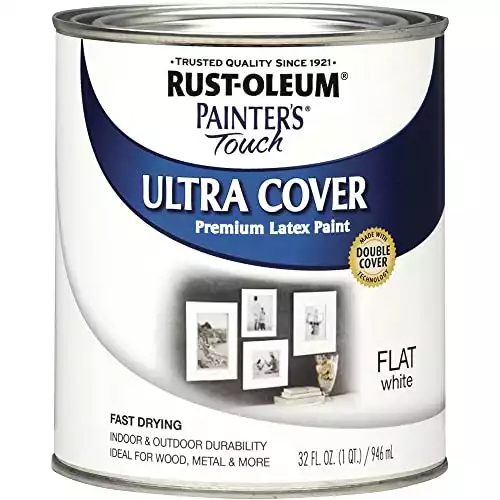 Rust-Oleum Non-Toxic Latex Based Paint
Rust-Oleum Non-Toxic Latex Based Paint
- Affordable & Durable: Cost-effective option for various wood painting projects, offering durability and a flat finish for protection.
- Quick-Drying Formula: Enables rapid project completion with its fast-drying properties, becoming touchable in under 30 minutes.
- Color Variety: Comes in 26 different colors, providing ample choices to match your desired aesthetic.
- Coverage Area: Can easily cover an area of up to120 square feet, offering excellent value and efficient use of paint.
- Covers 120 square feet
- Dries in under 30 minutes
- 26 color options
- Highly affordable
- First coat may streak
- Multiple coats required
4 | Country Chic Eco-Friendly All-In-One Paint—Chalk Paint
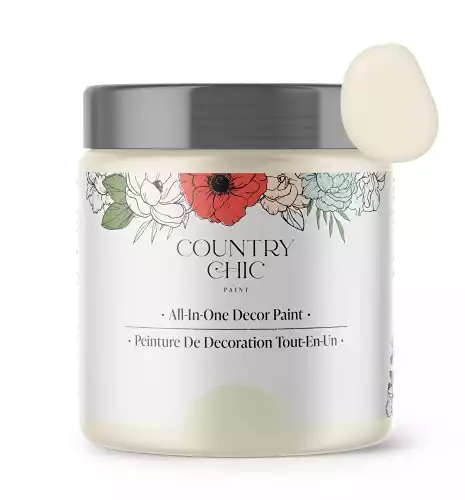 Country Chic Eco-Friendly Chalk Paint
Country Chic Eco-Friendly Chalk Paint
- Environmentally Friendly: Boasts low VOCs and no fumes, maintaining an eco-friendly status for environmentally conscious projects.
- All-In-One Convenience: Combines primer and top coat for easy, direct application to any surface, eliminating the need for separate priming.
- Professional Finish: Achieves a polished appearance when used correctly, elevating the look of your wood surfaces.
- Quick Drying & Versatile: Dries in 30 minutes, allowing for painting and distressing within 24 hours; suitable for both outdoor and indoor use.
- Eco-friendly product
- 50 color options
- Rapid drying properties
- Paint and primer combo
- Pricier than alternatives
- Multiple coats needed
5 | Rust-Oleum Ultra Matte Interior Chalked Paint—Acrylic Paint
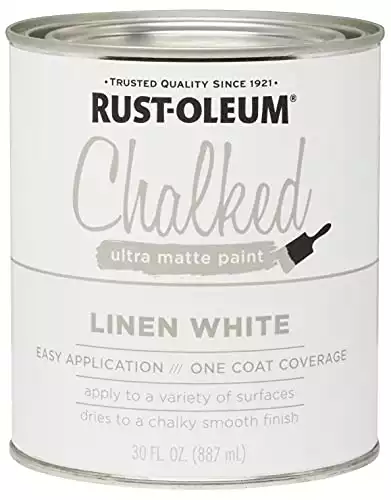 Rust-Oleum Ultra Matte Interior Acrylic Paint
Rust-Oleum Ultra Matte Interior Acrylic Paint
- Restoration Ideal: Perfect for revitalizing wooden pieces, offering a smooth matte finish with complete coverage in one coat.
- DIY & Beginner-Friendly: Excellent for DIY wood projects, providing a flawless look and a user-friendly experience for amateur painters.
- Quick Drying & Easy Cleaning: Dries in just 30 minutes and can be easily cleaned with soap and water, ensuring hassle-free maintenance.
- Versatile & Elastic: Suitable for outdoor projects, showcasing great elasticity and adherence to wood surfaces.
- Adheres well to wood
- Great elasticity
- Dries in 30 minutes
- Easy to cleanup
- Top coat needed for durability
- Priming needed before applying
How to Use Wood Paints Effectively on Wood?
The wood to be painted needs to undergo three processes regardless of its status. Newly constructed wooden items and any old item that requires repainting will first have to be cleaned and sanded. It will then require priming.
Before you take up any project, make sure to draw a detailed plan. Investing in the right tools and products is important for the best results.
While it may be tempting to take shortcuts, do not do so. Skipping steps now may save you time but could cost you in the coming years. Preparing everything before starting a project is critical to ensure its success.
Painting is a fun experience. Painting wood is even more wonderful. Follow the steps given below to effectively use wood paints and prepare to enjoy yourself thoroughly!
Use a Primer
Primers are an important product in wood painting. They are created to ensure the paint has a smooth surface to adhere to. It results in a consistent finish. Make sure to use a primer on any wood surface you want to paint.
Wood absorbs paint in an uneven manner due to its porous nature. Primer takes care of this problem and gives you a smooth surface by evening the wood grain. It also takes care of stains, smoke damage, etc.
Primers also prevent wood bleed. These stains keep appearing regardless of how often you paint the surface due to the tannins in the wood. This is often seen as different hues in the wood. They are damaging to the paint. So do not skip priming your wooden surface.
Go With the Grain
It is important to go with the grain of the wood, in complete strokes, wherever possible. It will prevent dripping. Make sure your brush does not have too much paint on it. Stick to a single direction while painting and keep your strokes light to prevent the appearance of brush strokes.
Keep the paint minimal during your first coat. You can always apply a second coat to fix any spots you may have missed. If you are working with paints of thin consistency, additional layers may be necessary for the best results.
Use a Quality Brush
Invest in a quality brush if you plan on using a brush instead of a roller. Otherwise, you have to deal with shedding bristles. The tools you need to use and the technique required to paint wood furniture depend completely on the material you want.
Brushes with coarse bristles are a bad choice for painting furniture. You will need to choose the right-sized tool. Smaller tools that are comfortable and easy to handle while working are worthwhile investments. Choice a brush and a paint that is ideal for painting wood.
Run your brush through watering to prepare it before starting to paint. If you are working with oil-based paint, you will need to use a paint thinner to make cleaning easier.
Add a Protective Coat
In addition to your paint layer, you will need to apply a protective layer to prevent water damage and allow easy cleaning without tarnishing the paint layer underneath.
A protective top layer extends the life of the furniture and protects it against any dings and scratches. There are a variety of topcoats available for various purposes. Choose the right coat and follow the necessary steps to apply it to ensure it lasts.

Tips for Painting Wood Furniture
The type of paint you choose will depend on the look you are aiming for. A matte finish look will require a different paint from a distressed look.
Here are some tips for painting wood furniture:
| Step | Tips & Insights |
|---|---|
| 1. Preparation | Remove drawers and hardware; place furniture on a drop cloth or tarp. |
| 2. Sanding | Sand for an even, soft feel; improves paint adherence. |
| 3. Cleaning | Use a tack or damp cloth to wipe down debris after sanding. |
| 4. Priming | Apply at least one coat of primer to enhance paint adherence and durability. |
| 5. Painting | Apply paint lightly; avoid thick coats; work in a ventilated, dry space; allow drying between coats. |
| 6. Paint Types & Finishes | Oil-based paints: smoother finish, quick drying; Milk latex/chalk paints: distressed look. |
| 7. Drying & Curing | Ensure proper ventilation; allow sufficient drying time between coats for the best results. |
| 8. Additional Considerations | Match paint type to desired finish; consider drying times and paint properties for specific projects. |
Tips for Painting Wood Cabinets
Painting or repainting any wooden cabinets located in your bathroom or kitchen will require a careful selection of paints. These spaces are commonly associated with moisture, making it very likely for your cabinet surface to fall prey to mildew or mold.
| Step | Tips & Insights |
|---|---|
| 1. Selection | Choose moisture-resistant, rot-repelling paint for bathroom and kitchen cabinets. |
| 2. Paint Type & Finish | Oil-based, high/semi-gloss: prevents water absorption, easy cleaning; Satin/flat sheen for interiors. |
| 3. Preparation | Remove drawers/doors, clean thoroughly; De-gloss glossy surfaces and stained wood before sanding. |
| 4. Sanding | Use a random orbital sander for quick results; Hand sand tricky edges; Improves paint adhesion. |
| 5. Priming & Painting | Clean and prime surface; Paint hard-to-reach areas first; Allow drying time between coats. |
| 6. Materials & Approach | Use quality materials; Don’t rush the job for better results. |
| 7. Drying & Curing | Ensure proper ventilation; Allow sufficient drying time between coats for the best results. |
| 8. Additional Considerations | Match paint type to desired finish; Consider drying times and paint properties for specific projects. |
Tips for Painting Wood Crafts
The size and extent of your wood craft project will determine the type of paint you will need to use.
| Step | Tips & Insights |
|---|---|
| 1. Paint Selection | Size and extent of wood craft project determine paint type; oil-based for large, craft paints for small. |
| 2. Topcoat & Sealing | Use polyurethane topcoat to lock in color; seal wood to protect paint and prevent chipping. |
| 3. Sanding & Priming | Sand along wood grain; prime wood before painting for better paint adherence. |
| 4. Painting Techniques | Use small amounts of paint; work quickly in hot weather; dip brush in water to keep it wet. |
| 5. Drying & Curing | Ensure proper ventilation; allow sufficient drying time before sealing for best results. |
| 6. Additional Considerations | Match paint type to project size; consider drying times and paint properties for specific crafts. |
Tips for Painting Wood Paneling
Proper steps need to be followed if you decide to paint wood paneling in your house. Although the steps may initially seem unnecessary, they have long-term effects and are necessary to ensure your wall looks its best.
| Step | Tips & Insights |
|---|---|
| 1. Primer Selection | Use oil-based primer for decent coverage and to prevent bleed-through on wood paneling. |
| 2. Paint Type & Durability | Choose oil-based paint for rigid durability and long-lasting finish. |
| 3. Trims & Edges | Oil-based paint provides protection for trims around doors or close to the floor. |
| 4. Additional Considerations | Follow proper steps for best results; consider the long-term effects of each step in the process. |
In Conclusion
The wide range of paint types available in the marketplace can make it a daunting task to choose the right one for your project.
Here’s a breakdown of what we covered in summary:
As you explore the world of wood painting, remember that the experience can be joyful and relaxing! Don’t be afraid to dive in and try new techniques. Once you’ve mastered painting wood, why not delve further into woodworking?
Check out our post about wood for bed frames to learn more about choosing the best materials for your next project.

